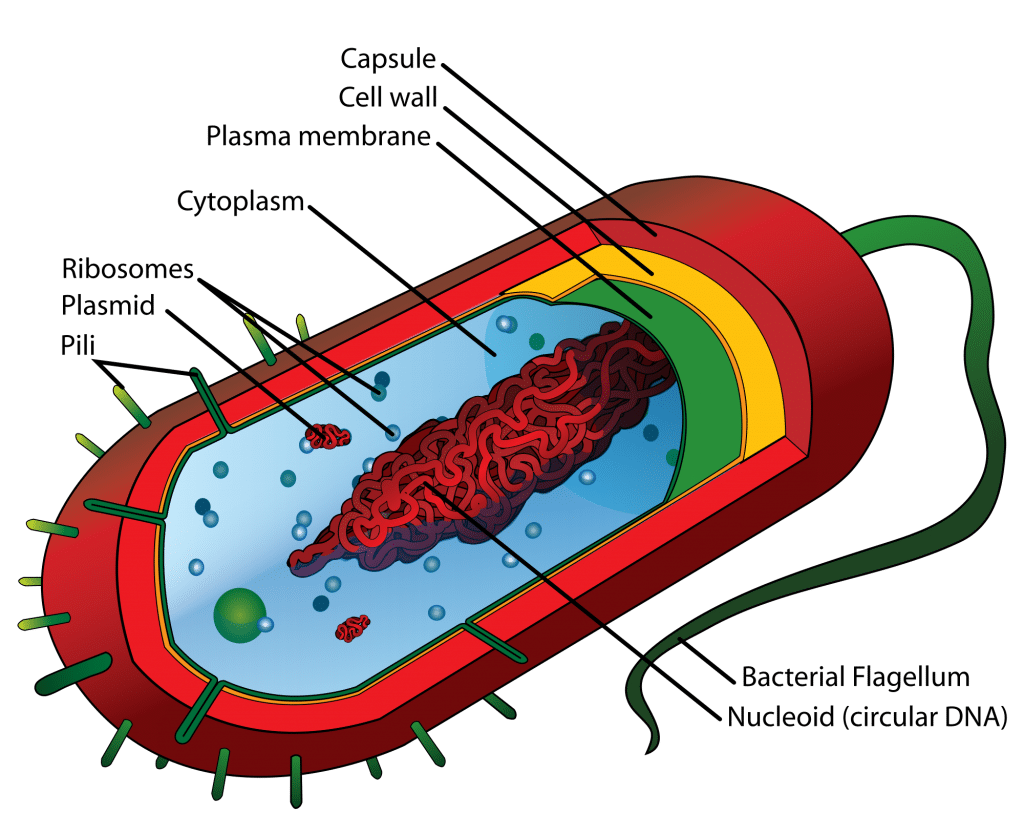Section 4: Prokaryotic Cell Structure

Prokaryotes are bacteria that are generally smaller and simpler than eukaryotic cells. They are single-celled organisms that do NOT have a nucleus or membrane-bound organelles. The cell wall surrounds the plasma membrane, gives the cell its shape, and prevents dehydration. DNA floats around in the cell, and ribosomes work together to produce the proteins the cells need to gather nutrients and reproduce. A prokaryote’s slime layer, or capsule, is a sticky layer around the cell wall that helps it attach to surfaces in its environment. DNA is found in a single chromosome and contains most bacteria’s genes. A plasmid is a small double-stranded DNA molecule distinctly different from chromosomal DNA and can carry antibiotic-resistant genes. Some bacteria, called flagella, have long, whip-like projections that help them move. The plasma membrane surrounds the cell and regulates what enters and leaves. The pilus is an extension of the plasma membrane. It allows bacteria to stick to a surface and acts as a bridge where two bacteria can exchange DNA.
Review:
- Describe the purpose of the cell wall.
- Where is DNA found inside of a cell?
- What is the role of the plasma membrane?
